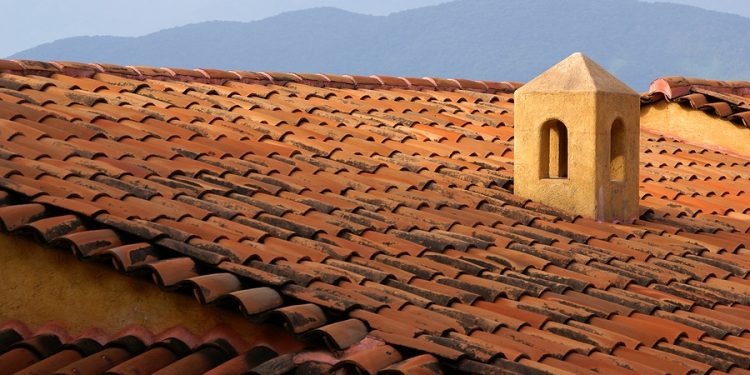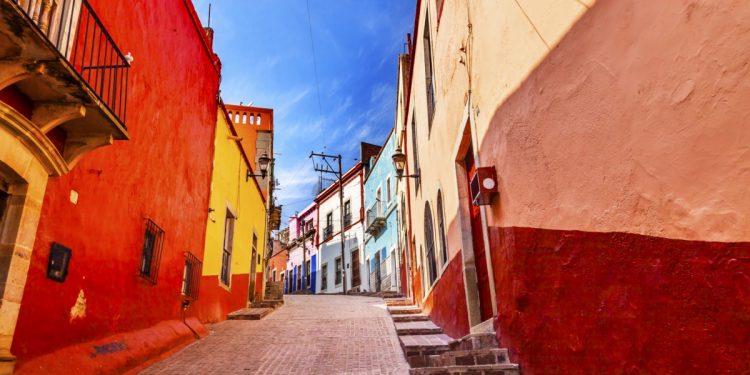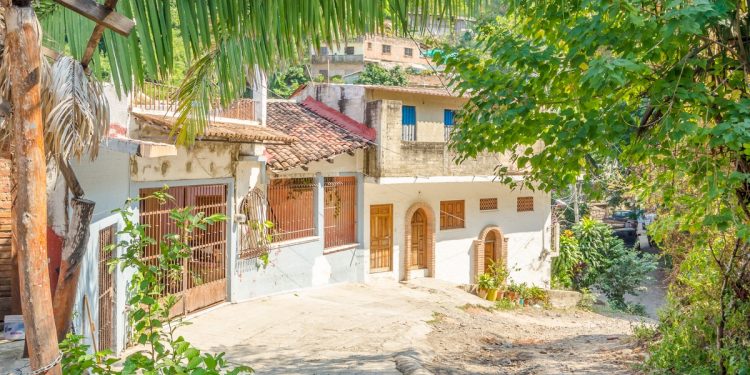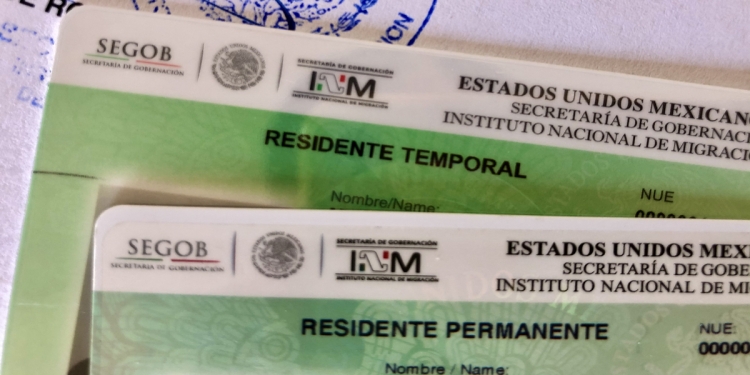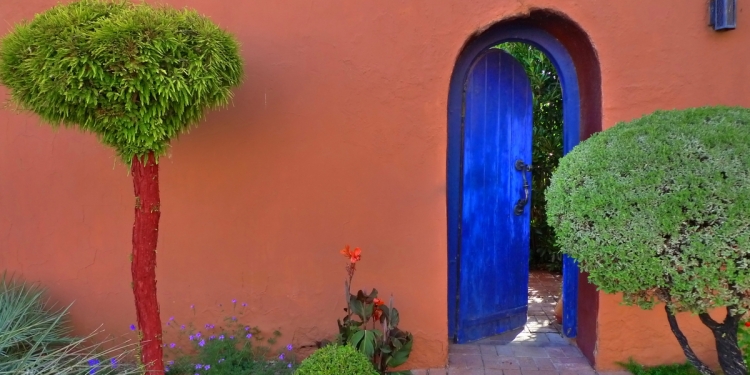Choosing a location in Mexico to live is a fundamental decision, and a key milestone in your planning once you make that choice.
Some people who know Mexico and have been visiting here for many years may have a clear idea about where they want to live. The place is known to them, they might already have an established network of acquaintances, friends, and contacts there; they are probably familiar with the location and the areas surrounding it, and they might even own a home there already which they have been using for extended visits without having moved to Mexico to live full-time.
Others may have some outline thoughts and ideas about the different regions, and some limited experience of having visited some places in Mexico. Some people will be approaching Mexico for the first time, with little or no prior knowledge of the country.
This article highlights and explores key factors and choices to contemplate as you consider short listing potential places to live or considering whether places you already know will be suitable for your lifestyle needs.
Key factors to consider when you’re researching places to live in Mexico
For many people, choosing a place to live in Mexico can be something of a blank canvass. Our detailed article about matching your lifestyle needs with your location provides helpful foundational guidance that will help you to consider places beyond their notoriety or current popularity.
Key factors are summarized in the section below; and by connecting to our related articles and guides, you’ll be able to begin your search in earnest for potential places to live here.
Our series on places to live, work or retire in Mexico summarizes a list of specific locations to discover and consider.
Local climate and seasons
The climate and seasons are key factors you should consider when you’re exploring potential places to live in Mexico. Places you visited on vacation might be fine for short periods, or during certain seasons; ideally, seek out locations that offer climates which will be agreeable to you and your intended lifestyle activities year-round. Our article, land of three lands, describes Mexico’s three principal climate zones, and our article, hot coasts, cool colonial cities, describes the contrasts between living along the coastal plains and living in the highlands.
Further insights about climate and seasons
Choosing your climate zone in a land of three lands
Hot coasts, cool colonial cities
Learn about the Dry Season and the Rain Season
Consider the local topography
Also consider the topography—the terrain matters because it affects climate, accessibility, and practical matters like getting around and adjusting to living at elevation.
Mexico’s beautiful mountain towns are quaint and picturesque, but some of them are literally built-in to the side of a mountain and feature steep roads and sidewalks. In some mountain towns, houses are constructed on several ‘terraced levels’ to compensate for the steep terrain on which they are built.
The beautiful colonial cities of Guanajuato and Taxco are good examples of this. If you have or develop any mobility issues, these sorts of places can be, or become, physically challenging to live in.
You might also to consider how you will cope with living at elevation; most people can adjust to living in thinner air, but you ought to keep this in mind if you’re moving from a low-elevation area to living a mile or higher up on a mountain.
Further Insight about topography and elevation
Choosing between urban, semi-urban, and rural locations
Another key element to consider is whether you want to live in an urban, semi-urban, or rural location in Mexico.
Mexico’s cities offer all the services and amenities most foreign residents need and are also the most crowded.
Semi-rural locations are generally small or medium sized towns within a 30-to-60-minute drive of a big town or city.
Rural Mexico is unlike rural towns and villages in the US and Europe, for example; it offers some outstanding opportunities for picturesque countryside living, but it will require you to make some compromises and organize your lifestyle routines somewhat differently than if you are in a larger town or city.
Further insight about choosing living environments
The value of good a real estate agent
Working with a local real estate agent, especially when you’re buying a home, can be a worthwhile investment. Well established realty agents carry a wealth of local knowledge, and the best ones have lived and worked at the location they represent for several years or more. A good local agent can apply their experience to give you invaluable insights and assistance in finding a home, and settling-in by connecting you to local contacts and helping you to make new acquaintances some of which might evolve into new friendships.
Further insights about real estate
Speaking Spanish is important, regardless of location
It’s quite hard to live in Mexico and operate effectively on a day-to-day basis if you don’t speak at least some Spanish.
Living in or near a community of foreign residents will provide you with an immediate support network and there will be people there who can ‘show you the ropes’ and interpret for you if you are new in Mexico and speak little or no Spanish to start. However, not all places that you might want to live in Mexico offer this, and so being able to converse in Spanish becomes essential.
Being able to converse in the local language offers access to the culture and enriches your overall experience of any foreign country. You will enjoy Mexico a lot more if you take some time to learn, or improve, your Spanish language skills.
Mexperience offers resources including an entire series of articles that help you to get acquainted with the context and nuances of Mexican Spanish language in everyday usage, and shares connections to language learning online, and at schools in Mexico.
Further insights about learning Spanish
Connect to helpful resources for learning Spanish
Study Spanish language usage with our PinPoint Spanish series
Discover and connect to Spanish language courses
Choosing between expat, local, and gated communities
When you have chosen a location to move to in Mexico, you will have three broad choices regarding the type of community and neighborhood you live in; these are:
Expat community locations: to live among other foreign residents, in well-established locations that are popular and often concentrated with other foreign residents; or
Gated communities: to live as part of a gated community that is most likely to be home for a mix of foreign residents and Mexicans; or
Traditional neighborhood: to live in traditional local Mexican neighborhoods.
Expat community locations
If you choose to live in a location that is popular and well-established with other foreign residents, —Lake Chapala, San Miguel de Allende, and Puerto Vallarta are prime examples— you’ll likely find yourself living in a neighborhood or area that has a relatively high concentration of other foreign residents living there, too.
This can provide excellent social and practical support, especially during your settling-in period, and can be enormously helpful as you begin to make new acquaintances and friends and need advice about contacts for services and amenities that you want or need locally.
You also have the advantage of moving into a mature community that has well-structured and organized groups and local societies that address many of the needs and interests of foreign residents. They also provide helpful opportunities to meet socially with people who share your language and culture.
Many foreign residents move to these well-established places and cultivate thriving lifestyles there. The higher demand for these locations means that you are likely to pay a premium for property—whether you rent or buy.
A potential risk of creating a dependent lifestyle in these places is that you might settle yourself into some form of ‘lifestyle bubble’ that is somewhat removed from everyday Mexico and by design limits your social circles—but it doesn’t have to be this way: plenty of people enjoy the benefits of living in communities heavily populated by foreign residents and integrate constructively with local people, culture, and events; learning (or improving) your Spanish is a key skill in this respect.
Further insight about living in expat communities
Discover popular places to live in Mexico
Article series: Essential skills for expats in Mexico
Connect to helpful resources for learning Spanish
Living in gated communities
Regardless of whether you live in a location that has an established community of foreign residents already living there, or somewhere less popular with foreigners, most towns and all cities offer the choice of living in a ‘gated community’—a private complex of residential homes that might also feature some shared spaces for social gatherings and other residential amenities like swimming pools, children’s play areas, sports facilities, gyms, and roof gardens.
Most condo units are part of a gated community. Our Guide to Real Estate in Mexico describes the types of homes available in Mexico, including those inside gated communities.
These gated communities offer several advantages, especially regarding management and security, as most of the matters related to maintenance, utilities, and upkeep are managed on behalf of the owners (or tenants) in exchange for a monthly Homeowners Association (HOA) fee.
The ratio of foreigners to Mexicans living in gated communities varies greatly and depends on the location, the locale, and the gated community itself. If there is a strong contingent of foreign residents living there already, you might find connections there to expat groups, societies, and events through meeting your neighbors and local notice boards or private online social media groups run by the residents.
In gated communities where foreign residents are not highly concentrated, you can still make new connections and get involved in local community activities through meeting your new neighbors, kindling acquaintances, and developing new friendships. Being neighborly is also an ideal way to improve your Spanish and many Mexicans enjoy talking with foreigners so that they can practice and improve their English.
Further insight about gated communities
Discover emerging and popular places to live in Mexico
Living in local Mexican neighborhoods
Some foreign residents seeking a place to live in Mexico might consciously make a choice to avoid places that already have strong contingents of other foreign residents living there; choosing instead to seek less popular places and to live in traditional Mexican neighborhoods where few other foreigners are likely to live in the immediate vicinity.
Most (but not all) foreigners who choose to live within the heart of a local Mexican community will know Mexico already, and their choice of community will come about either through knowing the location where you’ve chosen to live, or perhaps through having rented a home locally for a while and explored potential local options before deciding.
Some people who move to Mexico are more intrepid and carry within them the motivation and character to beat a new path for themselves and thrive without the need for a location already established by foreign residents, or within the managed structure of a gated community. They might or might not know Mexico well; and some might live with Mexican partners or family here, which facilitates a move into a traditional Mexican neighborhood environment.
Property prices (rentals and purchases) are generally lower in local Mexican communities than in locations already settled with a high concentration of foreign residents.
Cultivating a lifestyle within a Mexican local community will require you to have a good-enough command of the Spanish language to be able to operate, especially regarding finding a house to rent or buy locally and maintaining that property—that you will also have to manage yourself. Our guide about home maintenance and security offers in-depth practical tips for doing that.
You’ll also need to assimilate Mexican social culture more quickly, and possibly without the aid of other foreign residents nearby providing their personal experience and guidance; our free guide to social etiquette offers an excellent primer.
Further insight about living in traditional neighborhoods
Discover emerging and underexplored places to live in Mexico
Guide to home maintenance and security
Guide to social and business etiquette
Connect to helpful resources for learning Spanish
Factors that may influence your location shortlist
When you have considered what is influencing your choices about a places to live and undertaken some research of specific places to live, the next logical step is to compile a shortlist of places that you would consider moving to in Mexico.
Most people’s shortlist will likely be influenced by these significant factors:
Familiarity
Familiarity of the location(s) and area(s) is important. If you have visited the location before, and recently enough, —perhaps on vacation— you will already have a feel for the place, and possibly a sense about whether it might be suitable as a place to live, work or retire. Some additional research to discover its year-round climate (not just the seasons you have experienced there) and how it compares to your lifestyle intentions and requirements, will help you to determine whether any places already familiar to you in Mexico might be potential options for a location to live.
Environment type
Having established whether you want to live in an urban, semi-urban, or a rural location, you can further refine your options and filter your list on that basis.
Coastal plain or colonial highland
If you have decided that you want to be on or near the coast, or living inland at elevation, then that will provide another filter to narrow your choices; if you are open to coast or inland (highland) living, then your ultimate choice is likely to be determined by other factors —for examples, the availability of local services and amenities, and community connections— instead of climate.
Health, amenities, accessibility, communications, and schools
Other key factors you ought to consider include local access to health and clinical services, (especially if you have an existing medical condition and may require urgent assistance); access to local amenities that are important to you, e.g., stores, gyms, leisure or local community facilities, art and culture centers; proximity to transport hubs if you intend to travel a lot (e.g., airport); access to reliable telephony and internet services, especially if you intend to work professionally from home; and the availability of educational establishments if you have school-age children. Our article about matching your location with your needs describes these things in detail.
Exploring places to live in Mexico
Our series about places to live and work or retire provides a list of key locations to discover and consider.
The references below offer further connections to helpful and insightful articles and guides that can help you to carefully consider significant matters as you discover and explore places to live in Mexico, consider key decision-making factors and, using that knowledge, compile a shortlist of locations for review.
Further insight about choosing a place to live
Matching your lifestyle needs with your location
The charms and comprises of rural living
Discover places to live in Mexico
Further research and resources
Mexperience offers you a comprehensive online resource of information and local knowledge to help you discover Mexico, explore choices, find opportunities and plan a new life in Mexico. Resources include:




